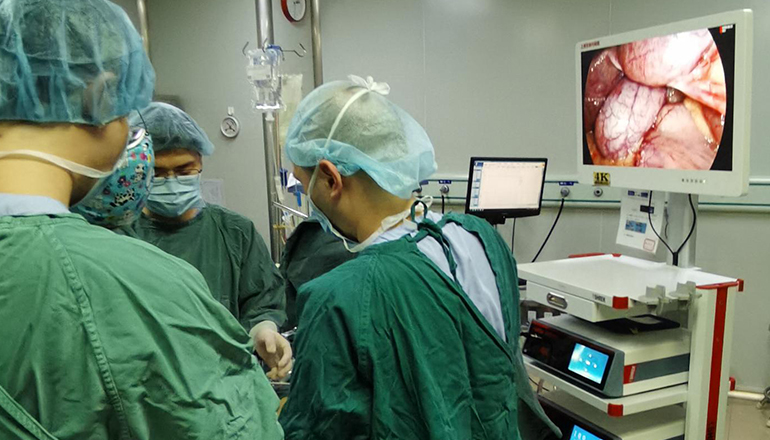- Shanghai, China
- [email protected]
- +86-21-58189111
Laparoscopic splenectomy is a surgical procedure that involves removing the spleen using a laparoscope, a thin, flexible tube with a camera and light attached to it. This minimally invasive technique has become a popular alternative to traditional open surgery for the removal of the spleen.
The spleen is an organ located in the upper left quadrant of the abdomen, which plays an important role in the immune system, and helps filter blood. Laparoscopic splenectomy is typically used to treat conditions such as splenomegaly (enlarged spleen), hematological disorders (such as idiopathic thrombocytopenic purpura, hereditary spherocytosis), and various types of cancers.
The procedure is usually performed under general anesthesia. The surgeon makes a few small incisions in the abdomen, through which the laparoscope and other surgical instruments are inserted. The camera on the laparoscope sends images of the inside of the abdomen to a monitor in the operating room, allowing the surgeon to visualize the spleen and surrounding structures.
The surgeon then carefully dissects the spleen from its attachments to other organs and tissues in the abdomen. The spleen is then placed into a small bag and removed through one of the small incisions. The remaining incisions are closed with sutures or surgical glue.

Laparoscopic splenectomy offers several advantages over traditional open surgery. Since the incisions are smaller, there is less pain and scarring, and a shorter recovery time. Patients typically require less pain medication and can return to normal activities more quickly. Additionally, laparoscopic splenectomy results in less blood loss during surgery, reducing the need for blood transfusions.
However, there are also some risks associated with laparoscopic splenectomy, as with any surgical procedure. Complications can include bleeding, infection, and injury to surrounding organs. Patients may also experience shoulder pain or discomfort in the chest or abdomen after the surgery.
Overall, laparoscopic splenectomy is a safe and effective alternative to traditional open surgery for the removal of the spleen. However, the decision to use this technique should be based on the specific needs and circumstances of each individual patient, and should be made in consultation with a qualified healthcare provider.
It is important to note that not all patients are candidates for laparoscopic splenectomy. Patients with certain medical conditions or those who have had prior abdominal surgeries may not be able to undergo the procedure. In these cases, traditional open surgery may be a better option.
In summary, laparoscopic splenectomy is a minimally invasive surgical technique used to remove the spleen. It offers several advantages over traditional open surgery, including smaller incisions, less pain and scarring, shorter recovery time, and reduced blood loss. However, it is not suitable for all patients and comes with potential risks and complications. Patients should discuss their options with their healthcare provider to determine the best course of treatment for their individual needs.
Leave a Comments